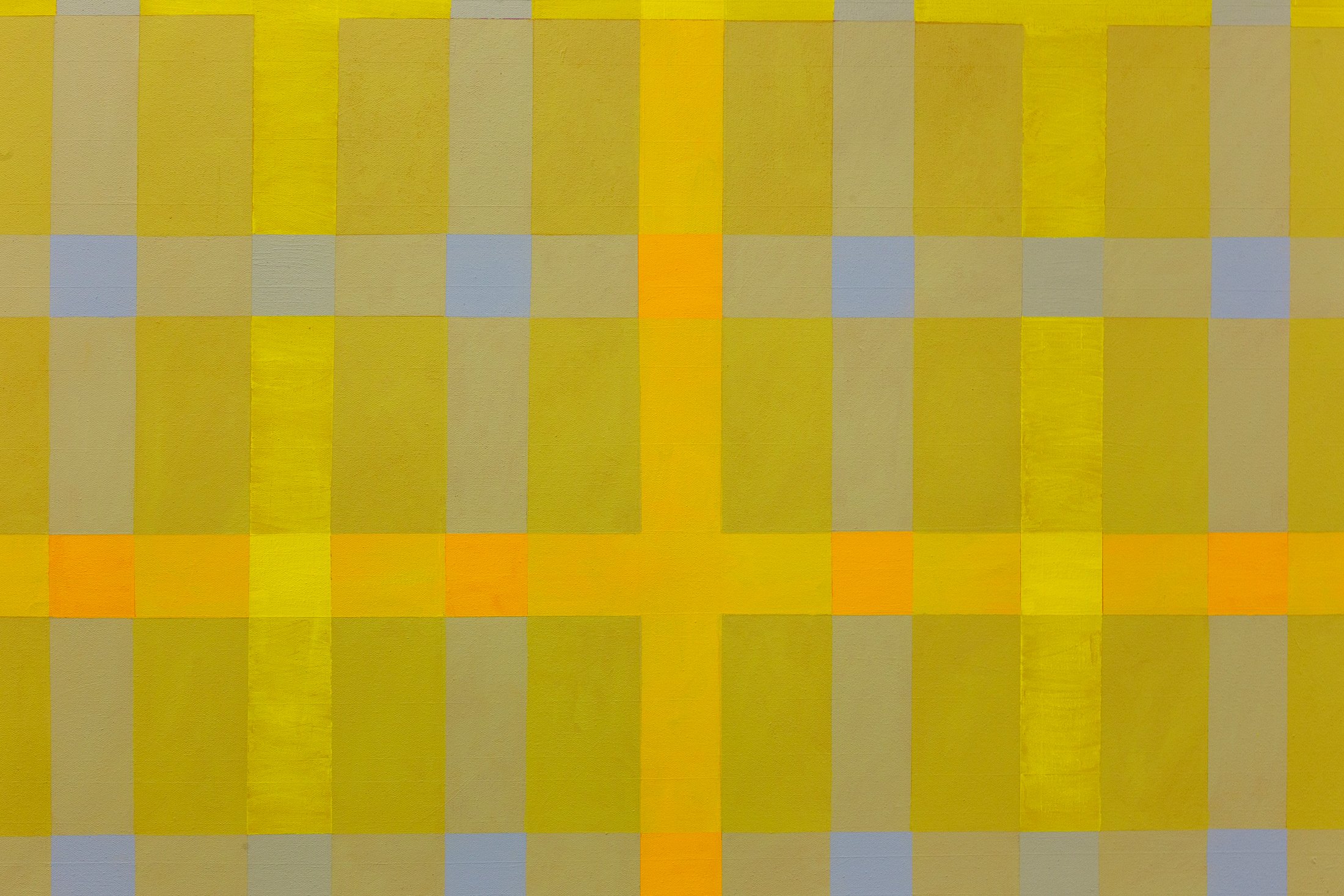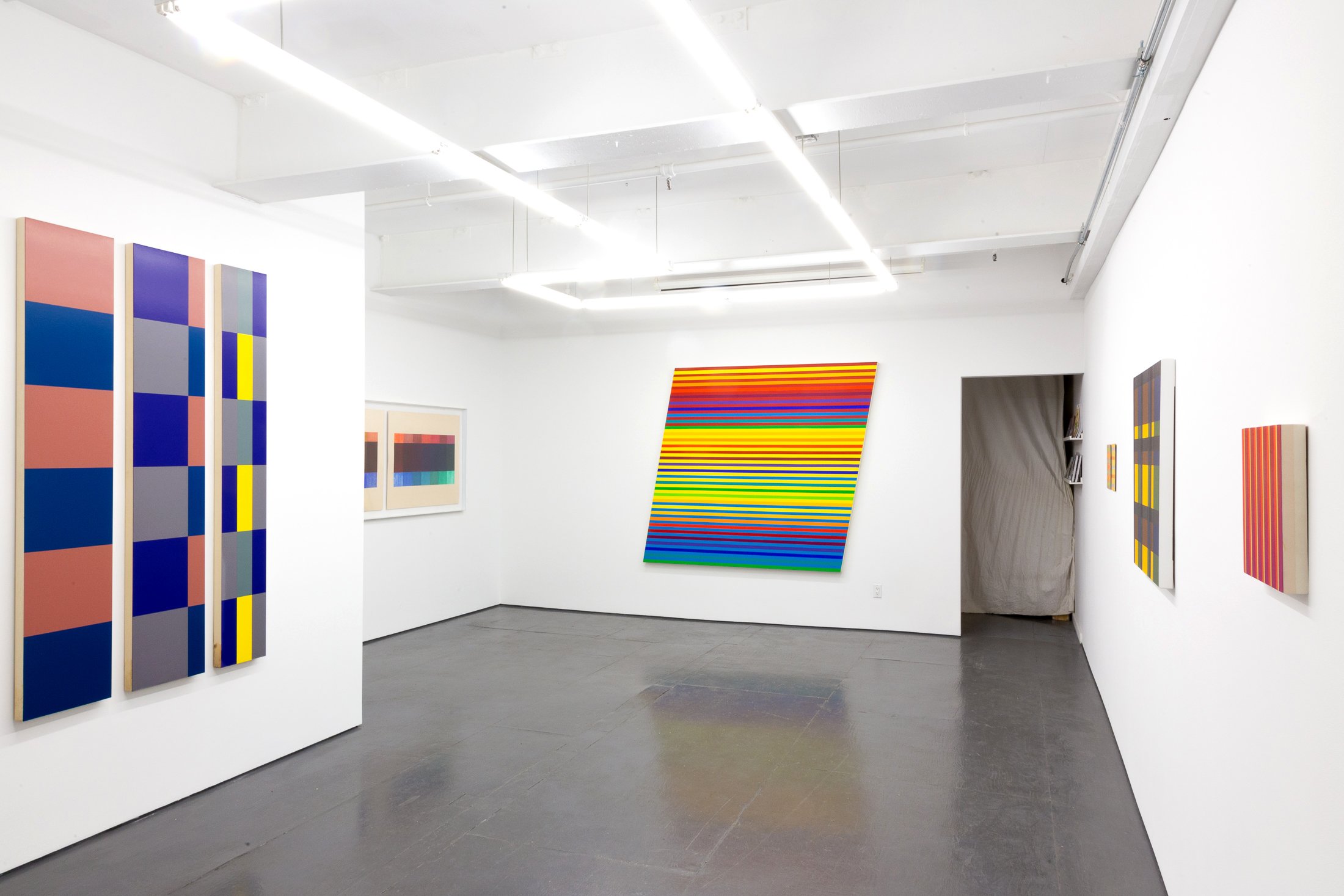Harmony and Contrast: Chromatic Painting at the Turn of the Century
Co-curated by Jacob Cartwright
Works by: Siri Berg, Gabriele Evertz, Daniel G. Hill, and Vincent Longo
May 14–June 19, 2022
Opening Reception May 14th, 3-6 pm
Transmitter is pleased to present the group exhibition, Harmony and Contrast: Chromatic Painting at the Turn of the Century, on view May 14–June 19, 2022. This exhibition of historic works examines a particular vein of non-objective painting at the turn of the 21st century—focusing on painters who were utilizing systems of their own devising to organize complex relationships of flat color. This grouping of artists isn’t intended to imply a school or a scene, but rather highlights work by four artists who were working outside of dominant paradigms, yet developing related ideas about color systems, in and around New York City during the nineteen nineties and early aughts.
These multicolor paintings all employed a method which can be described by a phrase borrowed from the 19th century French chemist and color theorist Michel Eugène Chevreul: simultaneous color contrast. This phraseology refers to the way that neighboring colors influence their respective appearances—yielding what Chevreul referred to as harmony and contrast.
Josef Albers’s Interaction of Color—his color theory handbook published by Yale University Press in 1963—is the canonical modernist touchpoint here, and there is a direct lineage. Albers was an early member of American Abstract Artists, the New York City artist group founded in 1936. All four artists in the show have been active members of American Abstract Artists over the course of their careers.
The exhibition examines how these artists individually expanded upon the analytical approach to color systems and sought to develop their own approaches to a visual syntax of color. The aim is to demonstrate the way that the chromatic impulse in painting is a perennial one, that endures outside of dominant trends and frameworks.
Read Jacob Cartwright's essay for the exhibition on the American Abstract Artists website.












About the artists:
Siri Berg (Swedish American, 1921-2020) born in Stockholm, Siri Berg attended The Institute of Art and Architecture at the University of Brussels before immigrating to the United States at the age of 19. Berg worked briefly in interior design until she began pursuing her true lifelong calling: painting and color. In the 1980’s she moved to a loft in SoHo, where she lived and worked for the rest of her life. Berg taught Color Theory at Parsons School of Design for over 30 years and retired at age 91.
Vincent Longo (American, 1923-2017) Vincent Longo studied at The Cooper Union and the Brooklyn Museum School. He began exhibiting in 1949 and in 1951 he received a Fulbright grant which he used to travel to Italy. Longo is equally acclaimed as both a printmaker and painter and he considered them to be equal practices that informed each other. He taught at Bennington College (1957-67) and taught painting and printmaking for 35 years (1967-2001) at Hunter College.
Gabriele Evertz (German American, b. 1945) Gabriele Evertz was born in Berlin and moved to the U.S. as a teen. She holds an MFA in Painting and a BA in Art History, both from Hunter College. In addition to her painting practice, Evertz has curated and co-curated critically acclaimed artist retrospectives and surveys of abstract painting. She has also authored a number of catalog essays on the experience of color in abstract painting. Evertz was a Professor of Art and Painting in Hunter College’s Department of Art & Art History for 28 years (1990-2018), where she is a Professor Emerita.
Daniel G. Hill (American, b. 1956) Daniel Hill holds an AB, Magna cum Laude from Brown University and an MFA from Hunter College. He is a multi-disciplinary artist who has worked in sculpture, installation, painting, photography, and digital media. He is the recipient of a fellowship in painting from the NEA and was awarded two year–long residencies at PS122 in New York City. Since 1985, he has held teaching positions at The College of the Holy Cross, Hunter College, Princeton University, and, since 1995, at the Parsons School of Design.
